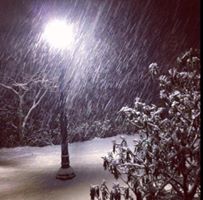Winter Safety Tips for Walking On Snow & Ice

Recent winter weather has brought the typical snow and cold problems. Physical Plant will continue to remove snow, sand sidewalks and roads, and use chemical melters to reduce slip and fall hazards as much as possible. Remember, they will salt and melt it today but it will freeze again overnight. It is important for individuals to recognize the hazards of slippery walks and roadways. There are several things that can be done to reduce the risk of falling when slippery conditions exist.
Here are some helpful hints:
- Wear boots or overshoes with grip soles such as rubber and neoprene composite. Slick leather or plastic soles on shoes will definitely increase the risk of slipping.
- When getting out of your vehicle, look down at the surface. If it’s coated with ice you might want to park in a different place.
- Use special care when entering or exiting vehicles. Use the vehicle for support. Before standing brace yourself with the vehicle door and seat back. This will give you some stability.
- Step , don’t jump, from vehicles and equipment.
- Don’t walk with your hands in your pockets. This reduces the ability to use your arms for balance if you do slip.
- Take short shuffling steps in very icy areas.
- Don’t carry or swing heavy loads, such as large boxes, cases or purses that may cause you to lose your balance when you are walking.
- When walking, curl your toes under and walk as flat-footed as possible.
- Don’t step on uneven surfaces. Avoid curbs with ice on them.
- Place your full attention on walking. Digging in your pocketbook or backpack while walking on ice is dangerous.
- Test potentially slick areas by tapping your foot on them.
- Keep walkways clear of debris, water, ice and slippery materials.
When these helpful hints don’t work, and you know you are going to slip, try to reduce your potential injury when falling.
- Roll with the fall. If you feel yourself falling, experts say you should bend your elbows and knees and try to take the hit on the fleshiest parts of your body, like the side of your thigh, buttocks and shoulder. The number one thing to remember is to protect your head. So if you find yourself falling, pivot to your side and tuck in your head.
- Relax as much as possible when you begin to fall.
- Toss the load you are carrying. Protect yourself instead of the objects being carried.
Some more things to remember…
Proper gear is a must, but wearing dark “winter” colors can make it hard for motorists to see you, especially if they aren’t expecting you. Consider wearing a brightly-colored scarf or hat, or reflective gear, especially if you have to walk in the street. And don’t forget gloves, and shoes or boots with nonslip soles.
Snow that has accumulated into drifts can muffle the sounds of approaching motor vehicles. Wearing hats and scarves that cover your ears can also distort or even eliminate these sounds. Keep warm, but make sure you can hear what’s going on around you.
When traveling with babies or small children, make sure they are dressed in brightly colored or reflective clothing. If you have to push a stroller or walk in the street, the child should be in front of you and as close to the curb as possible.
Because of road conditions, motorists may not be able to stop at traffic signals or slow down for pedestrians. Before you step off of the curb into the street, make sure that any approaching vehicles have come to a complete stop.
Bending your knees a little and taking slower steps can greatly reduce your chances of falling.


